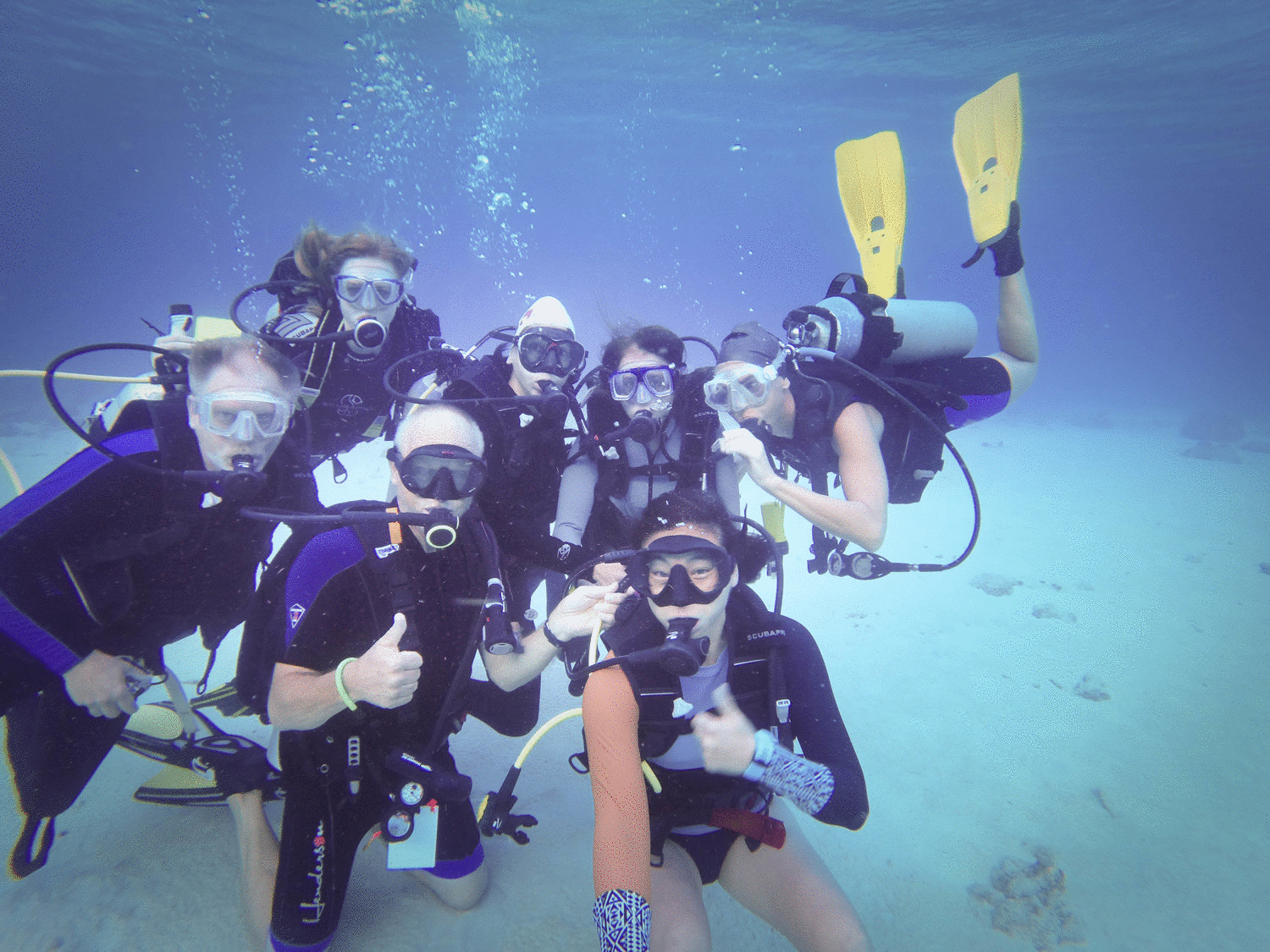In February, in the Bay of La Paz, Baja California.
We saw 2 juveniles; about 4 and 5 meters in length. The crew (Eduardo, Freddie aka “Freduardo,” and Pablo, recognized one of the sharks as Ana, supposedly a regular in the area. Then again, we were tipped off that maybe that’s a good thing to say to tourists? She was happy to let us swim alongside, swam more slowly than our first friend, and even rolled on her side, exposing her belly.
They’ve begun regulating who can go out and swim with the whale sharks; nowadays only authorized tour boats can go for these visits. As our requisite whale shark expert, Pablo, said, “We are the flies at the buffet. Let’s try not to be too annoying.”
Of course, no touching is allowed – about a person’s length of distance is recommended. It’s also good to avoid swimming above the whale shark, which will cause it to dive down, making it harder for you and the other humans to follow. With a respectable distance, they’ll largely maintain their course, calmly swishing their large tails back and forth while you kick at a steady pace to catch up.
And it is a fairly steady pace! I was surprised that I had to kick fairly hard to keep up with our first friend. Teenage Freddie swam the whole time with his fist in the air to mark the location of the shark, whilst we sedentary tourists took shifts hopping between the boat and the water. Then again, I was also super excited, clutching my GoPro, and trying to dive down and swim next to the shark. Either because my muscles warmed up, or because it was more relaxed around humans, the second shark was a lot easier to keep pace with.
Apparently luckier folks get to see clusters of them together, in clearer water, but this was still pretty great. They have such tiny eyes! and they are so chill!
Other whale shark thoughts…
Back at home, a video of a less happy whaleshark crossed my feed. Apparently some Chinese (of course) fishermen decided it would be cool to saw a whale shark into cross sections … from tail to head. Meaning it was alive for a long time while this was happening. Humans should not get nice things. [sad link]
At last year’s SF International Ocean Film Festival, I saw a documentary about whale shark tourism in the Philippines. It considered 2 very different whale shark experiences that a tourist might have – one, like ours, takes people out on a boat to try to spot sharks and swim near them. The other, at Oslob, is much more reliable, but also more questionable. Locals regularly feed the sharks, and there is direct contact between sharks and boats, and sharks and people. Accordingly to the film, the interactions have changed whale shark behavior and keeping them around when they would naturally migrate. The tour operators actually buy shark food from other islands, since they can’t catch enough anymore.
For those who don’t know, whale sharks eat plankton and small sea creatures they hoover up in their mouths – much like manta rays. Apparently there’s a whole lot we don’t know about them. They give live birth, but no one has ever seen it happen! We have no idea how deep they can dive beyond Really Deep.
